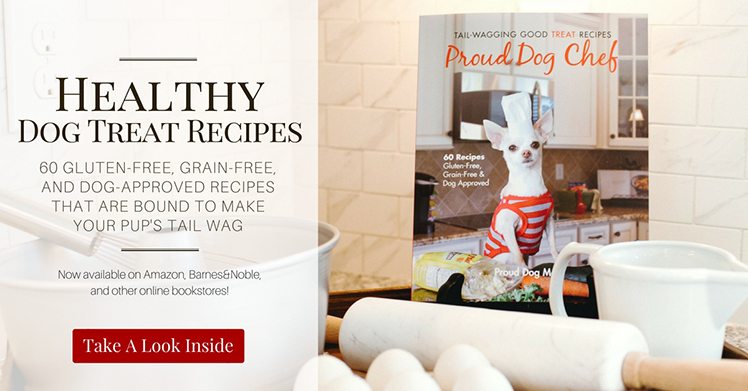Xylitol is a naturally occurring substance that’s used as a sugar substitute in many “human” foods. It’s as sweet as sucrose but only touts about two-thirds of the calories. As a result, it’s becoming more popular and is now widely used in various foods and products (many you’d never suspect). The problem? It’s incredibly toxic to dogs. In fact, even small amounts can be deadly to Fido.
What is Xylitol & How is it Used?
According to VCA Hospitals, “Commercially, most xylitol is extracted from corn fiber, birch trees, hardwood trees, and other vegetable material.” Once extracted, it’s made into a white powder that resembles sugar (both in looks and flavor). But here’s the thing: Compared to traditional sugar, xylitol is only a fraction of the calories, it’s lower on the glycemic index, and research shows it actually helps reduce the formation of dental plaque.

A few foods that may contain xylitol:
- Sugar-free chewing gum
- Breath mints
- Peanut butter
- Jam
- Sauces
- Pudding
- Gelatin snacks
- Syrups
- Candies
- Baking blends
- Certain baked goods
- Other sugar-free desserts, including skinny ice cream
Along with foods, xylitol is also used in many over-the-counter supplements/vitamins, toothpaste, oral rinses, some essential oil products, nasal sprays, and more.
From the list above, peanut butter is often a big shock to pet parents … especially since the tail-wagging-good nut butter is found in many pet treats. When selecting the perfect jar of peanut butter to use in your homemade pup snacks, always take a peek at the ingredient label to ensure xylitol isn’t listed. Ideally, you want to find a jar that only lists peanuts on the ingredient label. A few great brands you can rely on:
- Crazy Richards, 100% Peanuts All Natural Peanut Butter
- 365 Everyday Value, Organic Creamy Peanut Butter Unsweetened & No Salt
- Trader Joe’s Creamy No Salt Organic Peanut Butter
- Adams 100% Natural Creamy Unsalted Peanut Butter

Why is Xylitol Toxic to Dogs?
If your pooch consumes xylitol, it could lead to a life-threatening drop in blood sugar and liver failure. Here’s what happens …
In both people and canines, blood sugar levels are controlled by the release of insulin from the pancreas. While experts say xylitol doesn’t stimulate the release of insulin from the pancreas in people, that’s not the case for dogs.
When dogs ingest xylitol-laden foods, the xylitol quickly absorbs into their bloodstream. This triggers a strong release of insulin from the pancreas and leads to a steep drop in blood sugar (hypoglycemia).
Symptoms of xylitol poisoning typically develop quickly (within 10-30 minutes) and include:
- Vomiting
- Lethargy/weakness
- Difficulty walking
- Loss of coordination
- Tremors
- Seizures
- Coma
- Liver failure
In as little as 30-60 minutes, the effects of xylitol can be deadly. Untreated, hypoglycemia is often life-threatening.

What to Do
If you suspect your fur baby has eaten any foods or consumed any products that contain xylitol, call your veterinarian or Pet Poison Helpline (800-213-6680) immediately. When it comes to treatment, time is of the essence.
While you may be inclined to put everything on pause and induce vomiting, experts at VCA Hospitals recommend not to unless specifically directed by a veterinary professional. “It is important to get treatment for your dog as quickly as possible. As some dogs may already be hypoglycemic, inducing vomiting can make them worse!”
Treatment
There is no antidote for xylitol toxicity. Instead, veterinarians work quickly and aggressively to control and treat symptoms.
The outcome is generally best when treatment starts before symptoms appear. If your dog hasn’t developed any clinical signs yet, your vet may induce vomiting to prevent further absorption. However, if clinical signs and symptoms are apparent, your vet may take another route.
Either way, you can expect your dog to be hospitalized. Your vet will likely run blood work to monitor blood sugar levels and liver function, administer intravenous fluids, and offer other supportive care as needed.
If liver failure, bleeding disorder, or coma develops, experts say the prognosis is generally very poor.
3 Tips to Prevent Xylitol Poisoning in Dogs
- Always check ingredient labels before sharing/serving any foods with your pup. Along with searching for the name “Xylitol”, you’ll want to keep an eye out for “Sugar Alcohols”. According to the Pet Poison Helpline, “It may say xylitol but it may also be listed as sugar alcohols. Unless it tells us which sugar alcohol it is we have to assume it is xylitol. The other sugar alcohols are sorbitol and maltitol. These sugar alcohols do not cause toxicity in dogs. Anything that is labeled as sugar-free, all-natural and sugar-free products, chewable supplements or no sugars added products warrant a second look at the label.”
- Keep xylitol-laden foods and products out of your pup’s reach
- Only use pet toothpaste … never toothpaste designed for people








